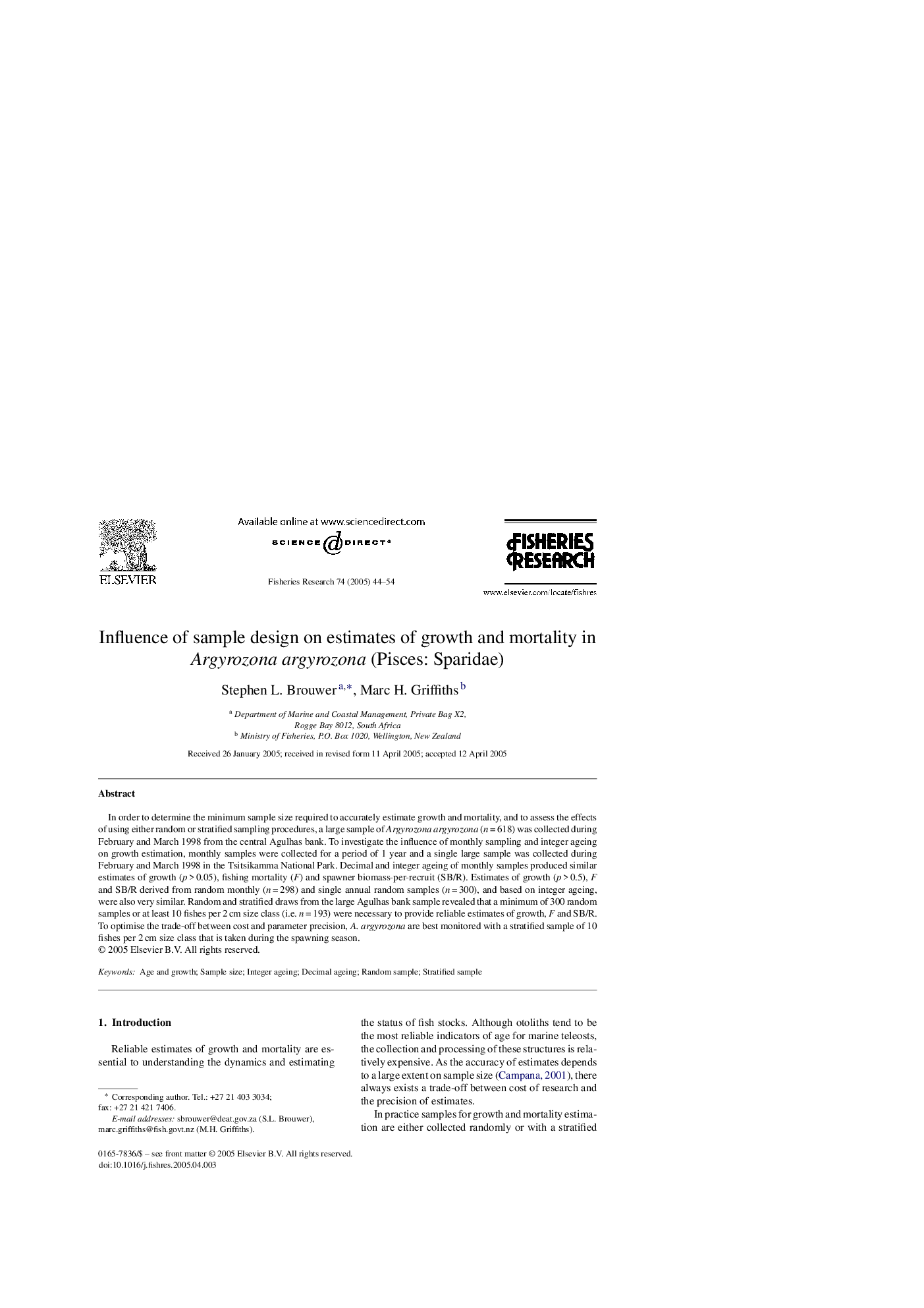| Article ID | Journal | Published Year | Pages | File Type |
|---|---|---|---|---|
| 9481656 | Fisheries Research | 2005 | 11 Pages |
Abstract
In order to determine the minimum sample size required to accurately estimate growth and mortality, and to assess the effects of using either random or stratified sampling procedures, a large sample of Argyrozona argyrozona (n = 618) was collected during February and March 1998 from the central Agulhas bank. To investigate the influence of monthly sampling and integer ageing on growth estimation, monthly samples were collected for a period of 1 year and a single large sample was collected during February and March 1998 in the Tsitsikamma National Park. Decimal and integer ageing of monthly samples produced similar estimates of growth (p > 0.05), fishing mortality (F) and spawner biomass-per-recruit (SB/R). Estimates of growth (p > 0.5), F and SB/R derived from random monthly (n = 298) and single annual random samples (n = 300), and based on integer ageing, were also very similar. Random and stratified draws from the large Agulhas bank sample revealed that a minimum of 300 random samples or at least 10 fishes per 2 cm size class (i.e. n = 193) were necessary to provide reliable estimates of growth, F and SB/R. To optimise the trade-off between cost and parameter precision, A. argyrozona are best monitored with a stratified sample of 10 fishes per 2 cm size class that is taken during the spawning season.
Related Topics
Life Sciences
Agricultural and Biological Sciences
Aquatic Science
Authors
Stephen L. Brouwer, Marc H. Griffiths,
